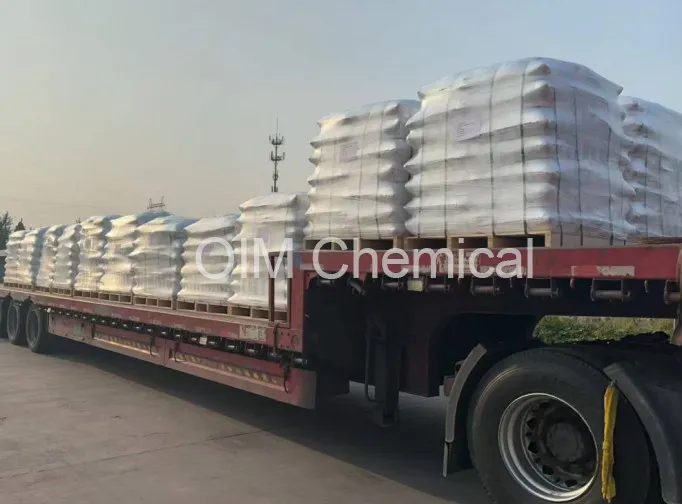Deliver 2 trucks of activated alumina to South America
Time:2025-11-10
In the middle of this year, one of our customers sent us tender request for over 40 tons of activated alumina. It mentioned that they need to be used in the dryers of the catalytic reforming unit, to dehydrate of recycle treating gas.
After we checked the data, we found that the requested bulk density is over 800kgs/m3. For this point, based on our experience over years, our technical told that the data is impossible to achieve, even BASF BRAND. Last year, we also received similar project, which need molecular sieve, activated alumina and ceramic balls together. So when finished checking all information, we decided to design the loading diagram and operation procedure to customer, which could better understand and assit customer to deep talk with the end user.
During tender period, customer still have more questions for the adsorbent choosen, because end user use brand adsorbents before. Through many months’ communication, customer found we’re professional to solve the technical question and always provide some constructive suggestion to assit him to close the tender. In the final stage, after many months’ discussion, it’s nice that customer achieve order successfully.
 |
 |
Why does activated alumina have such a good effect in air dryers?
1. Excellent adsorption performance: Activated alumina has a porous structure (pore size 2-50nm) with a specific surface area of 300-330m ²/g, which can efficiently adsorb water. The dew point can be reduced to below -40 ℃, meeting the gas requirements of precision equipment.
2. Strong chemical stability: Its chemical properties are stable and do not react with gases in compressed air, avoiding secondary pollution.
3. High regeneration efficiency: After adsorption saturation, it can be regenerated by heating at 200-350 ℃ for recycling, reducing long-term operating costs.
4. Wide industrial applicability: Suitable for high and low temperature environments, with uniform particles that are not easily powdered, reducing the risk of blockage, and suitable for continuous production scenarios.
Air adsorption dryers are familiar in the chemical industry, and their core components are adsorbents , such as activated alumina, molecular sieves, silica gel. They adsorb water and gas through a porous structure, and their performance affects the drying effect directly. As the adsorption regeneration cycle progresses, the adsorption capacity gradually decreases and needs to be replaced regularly to ensure stable system operation.
The replacement cycle is usually 3-5 years, but it needs to be adjusted based on the following factors:
1. Frequency of use: High frequency use will accelerate the saturation of the adsorbent, and the cycle needs to be shortened; Long term high load operation will accelerate the decline of adsorbent performance;
2. Environmental humidity: The higher the humidity of the inlet air, the greater the adsorption load and the corresponding decrease in lifespan; High temperature, high dust and other harsh environments may require early replacement.
3. Operating parameters: Abnormal pressure or increased dew point temperature may indicate adsorbent failure.
Meanwhile, during work, it is important to pay attention to the following matters:
1. Monitoring indicators: Regularly monitor the dew point temperature at the outlet, and if it continues to exceed the standard, check the status of the adsorbent.
2. Replacement operation: Thoroughly clean the adsorption tower during replacement to avoid mixing of new and old adsorbents; The filling should be evenly compacted to prevent air flow short circuits.
3. Selection matching: The new adsorbent should be consistent with the prototype number to ensure that the porosity and mechanical strength meet the requirements.
4. Regeneration inspection: After replacement, verify the regeneration effect and confirm that the heating temperature and cooling time are normal.

So how to choose the right adsorbent for an adsorption dryer?
1) Molecular sieve: It is a crystal structure with uniform pore size and strong adsorption ability for water molecules, especially suitable for precision industrial scenarios with dew point below -60 ℃. However, due to its low strength, it is easy to be pulverization under high-intensity compressed air impact, so it can only be used in small quantities in traditional twin tower adsorption dryers.
2) Activated alumina: It is a high-strength adsorbent and the most widely used adsorbent in adsorption dryers currently. It can withstand the high-pressure impact of compressed air without powdering. Excellent performance in moderate humidity environments, suitable for places with dew point below -40 ℃, with a regeneration temperature 30-50 ℃ lower than molecular sieves.
3) Silica gel adsorbent: It’s getting less and less in compressed air drying. It is only suitable for drying at room temperature and is used in pressure dew point environments of -20 ℃.
In terms of drying performance, molecular sieves are much stronger than activated alumina, but the replacement cost is higher. Therefore, before choosing which adsorbent, it is necessary to understand the user's requirements or expectations for dew point, so as to choose the best solution that can meet the user's requirements and reduce the cost of use.
